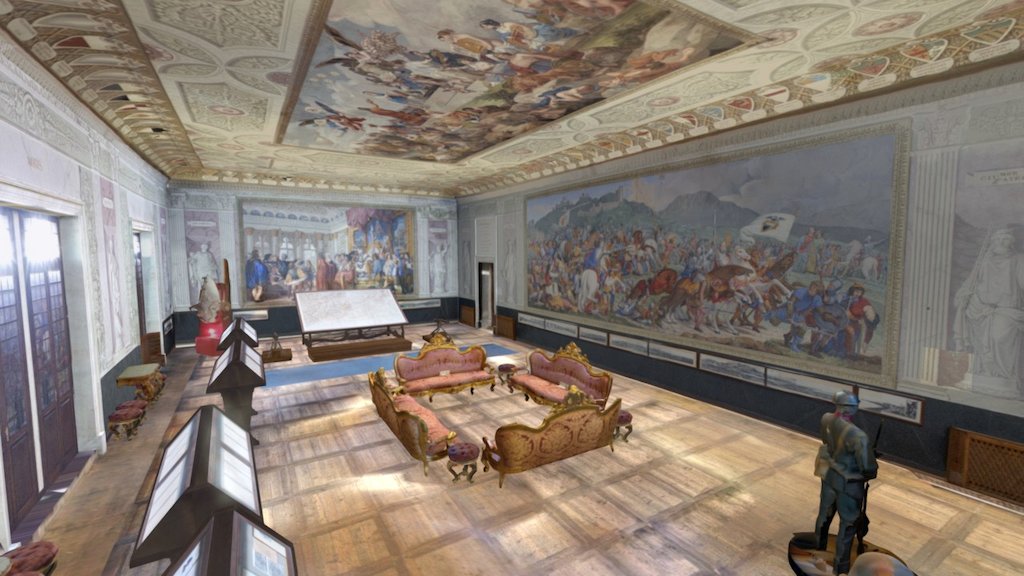
3D modeling has become valuable in various fields, including architecture, engineering, and design. However, it’s also an innovative way to aid historical reconstruction and preservation. By using 3D staging, historical sites and objects can be recreated with unprecedented accuracy, making it possible for people to experience and interact with history in new and exciting ways. The advancement of technology has allowed 3D modeling to recreate various objects, buildings, and monuments accurately. The benefits of using 3D modeling for historical reconstruction and preservation are significant.
The Advantages of 3D Modeling in Historical Reconstruction
The use of 3D modeling in historical reconstruction offers several advantages over traditional methods. One of the most significant advantages is the ability to recreate historical objects, buildings, and monuments with unprecedented accuracy. By using 3D scanning technology, every detail of a historical artefact can be captured, from its shape and texture to its color and material. This level of accuracy is not possible with traditional methods, such as sketches or photographs.
Another advantage of 3D modeling in historical reconstruction is the ability to create a virtual model of a historical site or object that anyone can view anywhere in the world. This is particularly useful for researchers who may not have the resources to travel to the site in person. Additionally, 3D modeling allows visitors who may not be able to visit the site in person to experience the historical location virtually.
Benefits of 3D Modeling in Historical Preservation
3D modeling also aids in the preservation of historical sites and objects. It allows for a detailed analysis of the site, which enables preservation experts to assess the site’s state and develop appropriate maintenance strategies. 3D modeling provides a non-invasive approach to analyzing historical sites and objects, particularly useful when dealing with fragile or valuable artifacts.
Examples of 3D Staging for Historical Preservation
One example of using 3D modeling for historic preservation is the reconstruction of the Colosseum in Rome. The 3D modeling of the Colosseum allows researchers and visitors to see the building in its original state, providing a glimpse into the history of one of Rome’s most iconic landmarks. Another example is the recreation of ancient Pompeii using 3D modeling. The 3 Dimensional staging of Pompeii allows visitors to experience the city as before the eruption of Mount Vesuvius, providing a unique insight into the daily lives of its inhabitants.
Accessibility for Researchers and Visitors
Adobe experts say, “Assemble 3D scenes in such an intuitive staging tool.” This means that 3D modeling and staging can provide an informative and engaging virtual experience. It allows researchers and visitors to interact with history in new and innovative ways, regardless of their physical location.
Potential Future Developments in 3D Modeling
As 3D modeling technology advances, the potential historical reconstruction and preservation applications are vast. One potential development is using augmented reality (AR) and virtual reality (VR) to enhance the 3D staging of historical sites and objects. AR and VR can provide a more immersive experience for visitors, allowing them to interact with the historical site or object uniquely.
The benefits of using 3D modeling for historical reconstruction and preservation are significant. It provides a more engaging and immersive experience for visitors and researchers, and it allows for better preservation of valuable historical sites and objects. 3D modeling technology can potentially transform how you view and understand history.
With further technological advancements, the possibilities for 3D staging of historical sites and objects are endless. It will undoubtedly continue to be an essential tool for historical preservation and education.
35 Comments
lipitor 20mg pills lipitor online buy buy generic lipitor online
buy propecia 5mg for sale order diflucan 200mg sale forcan order online
generic cipro 500mg – buy myambutol 600mg online cheap augmentin 625mg tablet
buy generic ciprofloxacin – oral augmentin 1000mg where can i buy augmentin
cost ciprofloxacin 500 mg – buy tinidazole 500mg online buy erythromycin 500mg
flagyl 400mg for sale – amoxicillin price order generic zithromax
stromectol price – tetracycline order online order generic sumycin 250mg
valtrex 500mg ca – order generic valacyclovir 1000mg order zovirax without prescription
buy ampicillin pill ampicillin online buy amoxicillin order
oral flagyl 200mg – buy cleocin 300mg generic azithromycin over the counter
order furosemide 40mg pills – buy generic captopril capoten 120mg tablet
glycomet tablet – buy generic combivir buy lincomycin 500 mg
buy zidovudine 300mg online – buy allopurinol without prescription
cost clozapine 100mg – brand glimepiride 4mg famotidine 40mg pill
seroquel without prescription – purchase ziprasidone generic eskalith order online
cost anafranil 25mg – buy generic celexa 20mg order doxepin 75mg without prescription
buy hydroxyzine 10mg pill – order fluoxetine 40mg sale order amitriptyline 25mg generic
oral augmentin 375mg – ethambutol 1000mg brand where can i buy cipro
amoxil oral – order amoxicillin generic order cipro online
azithromycin 500mg drug – floxin 200mg pills buy ciprofloxacin 500 mg sale
cleocin 150mg without prescription – buy cleocin generic chloramphenicol where to buy
ivermectin 3 mg for humans – order cefaclor 500mg without prescription buy cefaclor 500mg capsules
order ventolin 2mg online cheap – order fluticasone generic buy theophylline 400mg online
methylprednisolone 8mg pills – generic azelastine 10 ml buy astelin sprayer
buy generic clarinex for sale – purchase beclomethasone generic ventolin where to buy
buy micronase no prescription – buy glipizide pills buy forxiga
order metformin 500mg – order cozaar 50mg generic precose online order
repaglinide sale – buy empagliflozin 25mg sale buy jardiance 10mg online cheap
brand terbinafine – order fulvicin 250mg pills oral grifulvin v
buy semaglutide 14 mg pills – purchase desmopressin sale order desmopressin generic
buy generic nizoral – sporanox online sporanox cheap
buy famciclovir generic – order valaciclovir 1000mg sale valcivir 500mg over the counter
order lanoxin 250 mg generic – order calan 240mg online cheap order lasix 40mg online cheap
order lopressor sale – order inderal 20mg online cheap buy nifedipine 10mg generic
buy hydrochlorothiazide pills – buy hydrochlorothiazide 25 mg online cheap bisoprolol for sale online